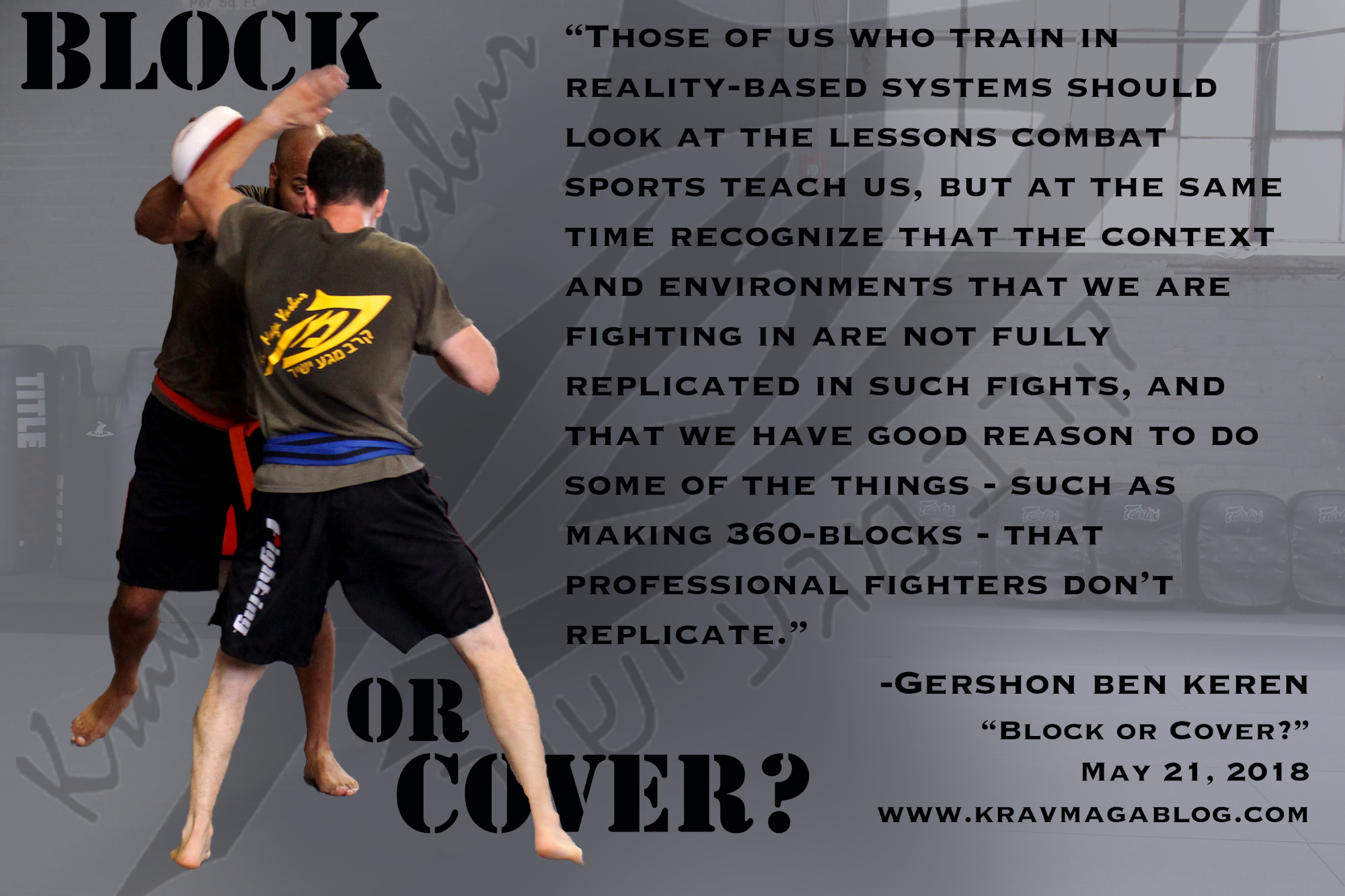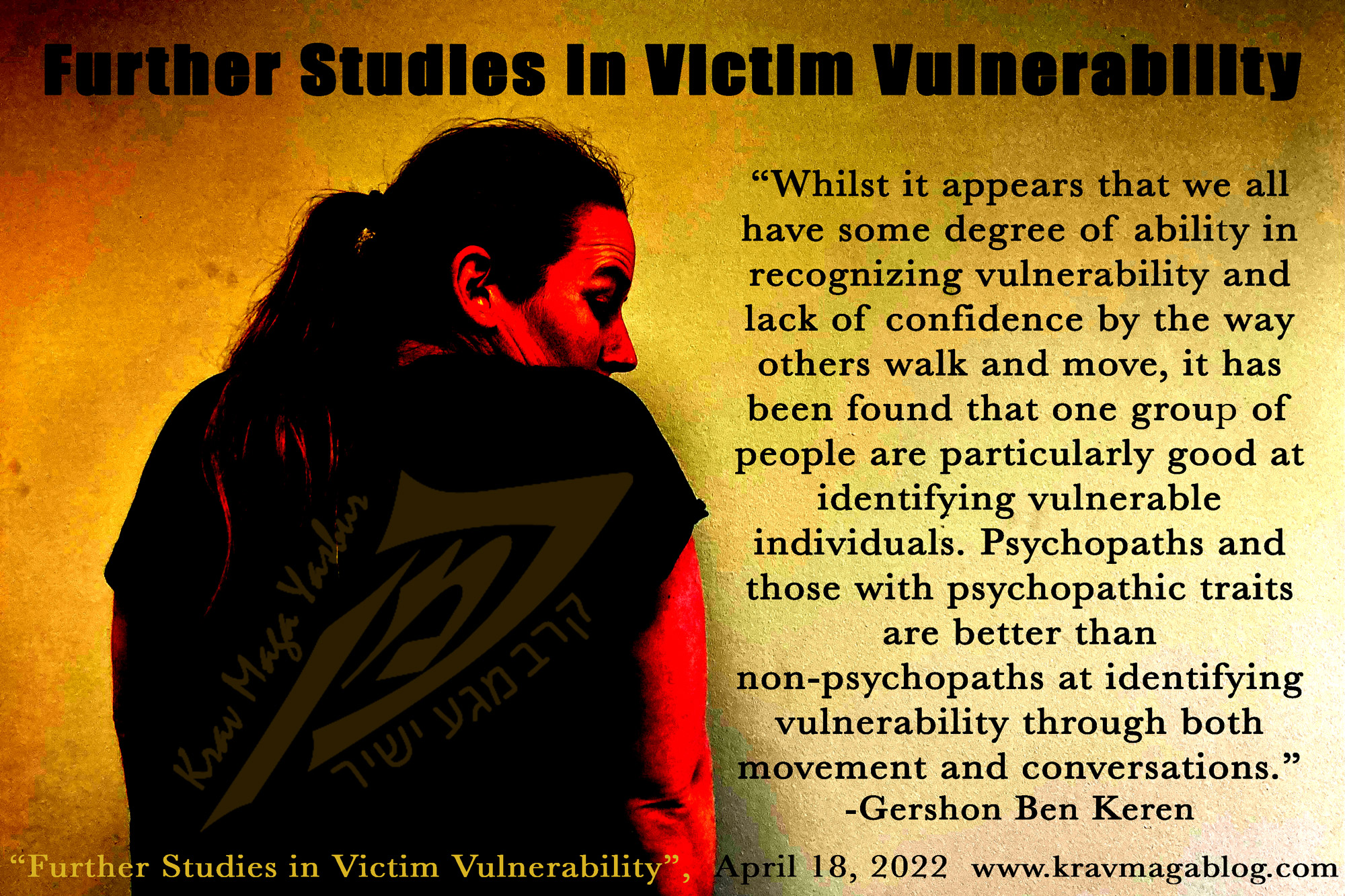Further Studies In Victim Vulnerability, is an article written by Gershon Ben Keren, a 5th Degree Black Belt in Krav Maga, who teaches Krav Maga in Boston, MA. He has also authored three Amazon best-Selling Books on Krav Maga.
Some people are more keenly attuned to interpreting a person’s vulnerability via the way they walk, move, and carry themselves (non-verbal cues), than others. Serial Killer, Ted Bundy, once stated that he, “could tell a victim by the way she walked down the street, the tilt of her head, the manner in which she carried herself. “In last week’s article I took a look at the oft quoted, and referred to, 1981 study by Betty Grayson and Morris Stein, where they videotaped people walking on a New York Street, and then showed the footage to offenders, asking them to select those individuals they would likely target and victimize, based off of their non-verbal cues etc. Because the results of this research appeared to be quite clear and seemingly conclusive, many other researchers were prompted to start investigating how predatory individuals perceive and judge vulnerability from movement. In this article I want to look at a few of these studies so that we can better understand how the way we walk and move may put us on the radar of certain predators.
One of the questions I often get asked about the Grayson and Stein study, concerns gender i.e., were women more likely to be targeted then men etc. As stated in the previous article, age was a more determining factor; older people were more likely to be selected as targets/victims, regardless of gender. However, studies based off of the Grayson and Stein research have focused on how relevant a target’s movement is, to the victim selection process in regard to rape and sexual assault i.e., in assault where the perpetrator is a stranger, does the way the target walks/moves affect their perceived vulnerability. In 1996, Murzynski and Degelman, attempted to test this. Rather than use convicted felons to select/judge vulnerability, they used students at a university, as well as a group of law-enforcement officers. These groups were chosen, based off the fact that women attending university are more likely to be sexually assaulted by male peers than women not attending university, and because it was hypothesized that those working in law-enforcement, in a similar way to the predatory individuals in Grayson and Stein’s study, would recognize and understand signals of “vulnerability” that are communicated through movement, based off the fact that they would often have to deal with the victims of crime etc. The experiment involved coaching female actors to move either as victims or non-victims based off the criteria from the Grayson and Stein study. The actors were split into three groups, two of which walked like “victims” and one which moved as “non-victims”. All those involved in the study were of a similar height/build, had brown hair and were instructed to have “neutral” facial expressions. The actors were filmed walking in the same direction, and for the same length of time, and had to turn a corner, which led them away from the camera; this gave an additional angle from which to view movement (something that wasn’t part of the original Grayson and Stein study). The students (of mixed gender), and law-enforcement officers who viewed the video of these actors were asked to rate them on a six-point scale, for both vulnerability and confidence. Perhaps unsurprisingly, the actors in the two victim groups scored significantly higher on both vulnerability for “sexual assault” and low self-confidence, than those in the non-victim group. These findings suggest that detecting vulnerability and low self-confidence is something that all individuals have, not just those who have a history of acting in a predatory fashion/manner i.e., those individuals in the Grayson and Stein study.
Whilst it appears that we all have some degree of ability in recognizing vulnerability and lack of confidence by the way others walk and move, it has been found that one group of people are particularly good at identifying vulnerable individuals. Psychopaths and those with psychopathic traits are better than non-psychopaths at identifying vulnerability through both movement and conversations. This could be because those who score highly on the PCL-R (Revised Psychopathy Checklist), often have to consciously learn and process emotions, as they themselves don’t feel them. As Cleckley famously said, “they know the words but not the music”. Successful psychopaths, those that learn how to fit in, in society, don’t intuitively read a person’s emotional state like most of us do, but instead have learnt which expressions and body language, accompany anger, fear and other emotions. In some ways they may be better at identifying how other people are reacting etc., because they are actively and consciously having to study, inquire and read other people is order to respond correctly and appropriately based on the context; it is usually those psychopaths who are unable or fail to learn how to interact and respond to people that end up in the prison system – “successful” psychopaths know how to play the game. This conscious learning of emotion may be the way that they learn most things, such as being able to identify vulnerability and low self-confidence and self-esteem. In trying to understand the world around them they are almost checking actions and behaviors off against a list of things that need to be present in order for them to recognize what a person is feeling or not. Ted Bundy, could be correct in his assertion that the tilt of someone’s head could determine their degree of vulnerability etc. Although, those in the Grayson and Stein study weren’t able to articulate why they selected the “victims” they did, those with psychopathy, who have analyzed these things, may be better able to describe them, due to the way they learn to recognize emotions.
There have been many other studies that have looked at gait, walking style etc. that appear to confirm the findings of the Grayson and Stein study – some have even replaced human actors with created imagery that replicates the victim and non-victim walking style. The research seems to show that walking upright, in a connected manner, avoiding an exaggerated stride length, is a good way to stay off of a predator’s radar.
0 COMMENTS















